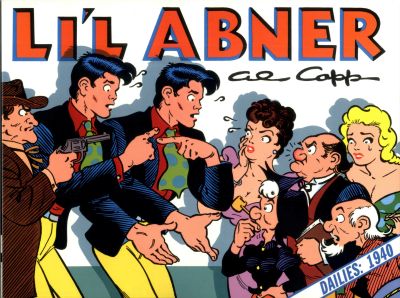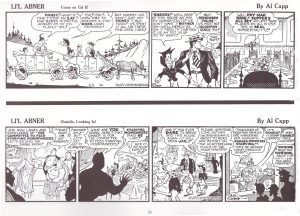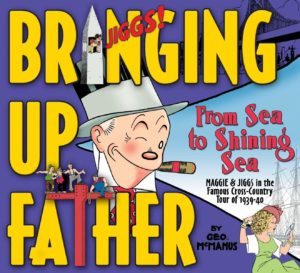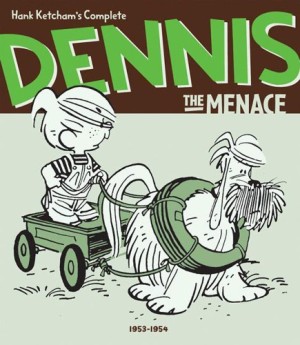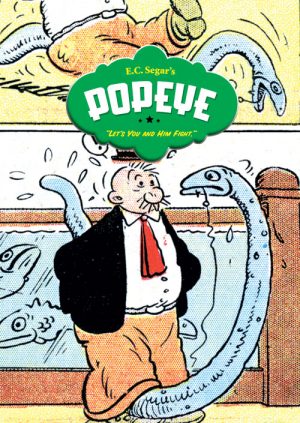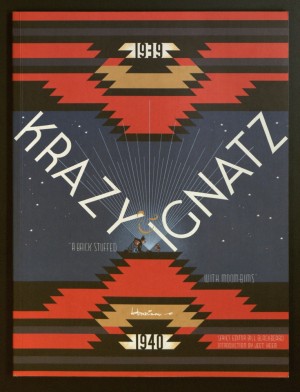Review by Frank Plowright
By 1940 the Li’l Abner newspaper strip had been running for six years. Al Capp’s art had become consistently smoother, the audience had become massive, and a film was in the works. The introduction reveals it to be pretty much a disaster, largely ignoring the elements that attracted Hollywood in the first place.
Thankfully the quality of the film didn’t impact on the strip, and if anything it gives Capp a little jolt, as while Li’l Abner had been perfectly serviceable, over 1938 and 1939 it had dropped into the repetition of Capp recycling already established scenarios to lesser effect. One of these had been the contrast of Abner’s down home ways with more rarefied society, but a nice twist on that is the entire Dogpatch community lured North to Boston on the promise of $10 an hour picking oranges in Boston, itself a nice joke. Capp provides an epic journey of hardship during the long trip made by folk living on the breadline. There’s a stop off in Washington, the social commentary of the sample page, the comedy of the cast and their constantly deteriorating cars, and Capp even finding time among the suspense to include another almost wedding of Abner and Daisy Mae. There’s sustained tension over two months of continuity, and the great joke at the end of the Dogpatch community refusing to believe there are no orange groves in Boston. How Capp solves their problem is even better, sentimental maybe, but heartwarming.
As 1940’s continuity rolls out Capp occasionally resorts to contrivance – how many times has Abner chanced across almost immeasurable wealth, for instance – but readers wouldn’t have it any other way, and there is an ingenuity to the plots that compensates. Capp also has an instinct for what’s been used before, so while other newspaper strip creators have milked a mine collapse for all the drama it’s worth, Capp allocates just five days, having had Abner trapped before in Volume Two. He’s also well aware of what’s a crowd pleaser, though, and the cover shows there’s another sequence with Abner’s gangster doppelganger Gat Garson. Perhaps now mindful of repetition, that’s restricted to eight days continuity.
Bearing in mind Capp prepared the strips for daily newspaper publication in the days before widespread TV, by 1940 his stretching out of suspense is masterful. When a hundred year old letter is discovered for Pappy Yokum, Capp delays the delivery for twelve days, each strip in between a comedy of errors ensuring the delivery doesn’t take place. Pappy Yokum threatened by a killer is another sequence with a great payoff, this suspense stretched over ten days, and while that’s less comedic, the secret of Adam Lazonga’s wooing technique is played for laughs all the way through.
Sadie Hawkins Day is now established as being spotlighted for several weeks every year, and in 1940 Capp livened it up with the appearance of vaudeville act The Leapin’ McGumps. They’re not the only surreal inclusion in what’s the longest Sadie Hawkins outing to date, pretty well seeing out the year’s continuity.
Li’l Abner is considered an all-time classic, but over earlier volumes it’s been hard to work past comedy stylings that are now too obvious, but 1940’s continuity will still surprise 21st century readers with its twists, and there’s no denying Capp’s artistic talent. He’s worked his way out of a rut and it makes Volume Seven something to anticipate.
